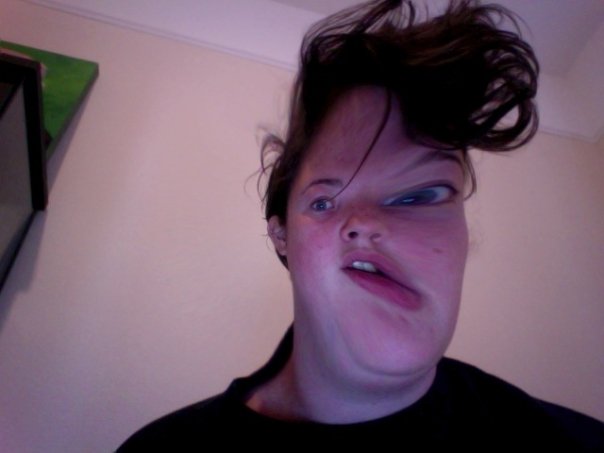"I'm Dead", David Shrigley, 2007
I'm still working on the family portrait, but have been side tracked by a trip to the Tate. I went to check out a "Comedy Art Forum" last week hosted by co curator of the Tate's "Rude Britanna" exhibition, Harry Hill (who guest curated the show's "Absurd" room), Sean Lock and Gail Tuesday.
The talk itself was fantastic, I went mainly because humour in British art is what I'm planning on writing my thesis on (which at this point is 7000 words of knock knock jokes). I don't think I learnt anything or gained any insight into the relationship between comedy and art, but it was a laugh all the same. There were faint grumbles from several audience members about how disorganised the talk was and how they hadn't learnt anything. But really, what did they expect? Cedar Lewisohn was stumbling and unprepared, add to that 3 comedians who took glee in running rings around him and in my opinion, you get an entertaining night out.
I did try to ask a question regarding the link between humour and British art, but it was met with blank stares and open mouths. Possibly because I'm not the most articulate person when it comes to public speaking, possibly because it followed a question about whether any of the panel were on Twitter or not.
Yeah, it really wan't a talk dedicated to education.
Luckily, after a wander round the exhibition a couple of days later, I found an answer in the show's catalogue:
"It strikes me that a lot of humour and art is a reaction of laughter or a smile. Some art, to me anyway, seems to be a joke. There is kind of a deliberate gag to it which sometimes artists fight and say that isn't their intention." Harry Hill
So That's that then. (there's more obviously but I'm saving that for the thesis).
Onto the exhibition itself. I feel bad about saying this, I really do, but it was kind of a let down. There were rooms I really enjoyed such as the "Bawdy" room containing several Sarah Lucas pieces; the grotesque pieces in the Satire room, and the huge Cruikshank painting of 'The Worship of Bacchus. Individually, the pieces shone, however the exhibition as a whole felt lack lustre and shambled together. It wasn't really sure what it was trying to do. The history of humour in British art spans over centuries and compacting it into 5 rooms didn't really do it any justice.
Or perhaps I'm just a prude, who can't take a joke.
I'm planning on returning to the exhibition this week, a second viewing may change my mind completely. Despite how dissapointed I was, I'd recommend going to see it. Although it seemed confused as to what it's purpose was as a show, it did get a laugh or two.

No comments:
Post a Comment